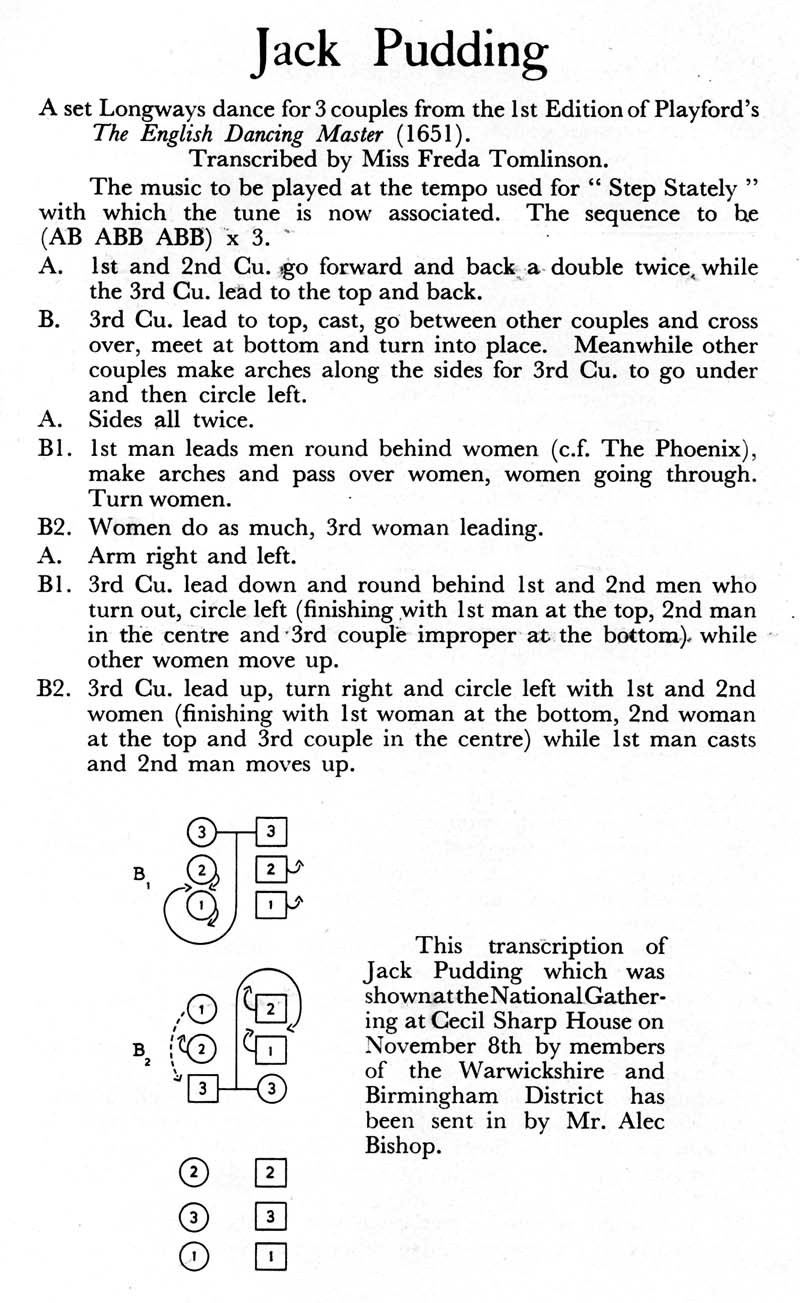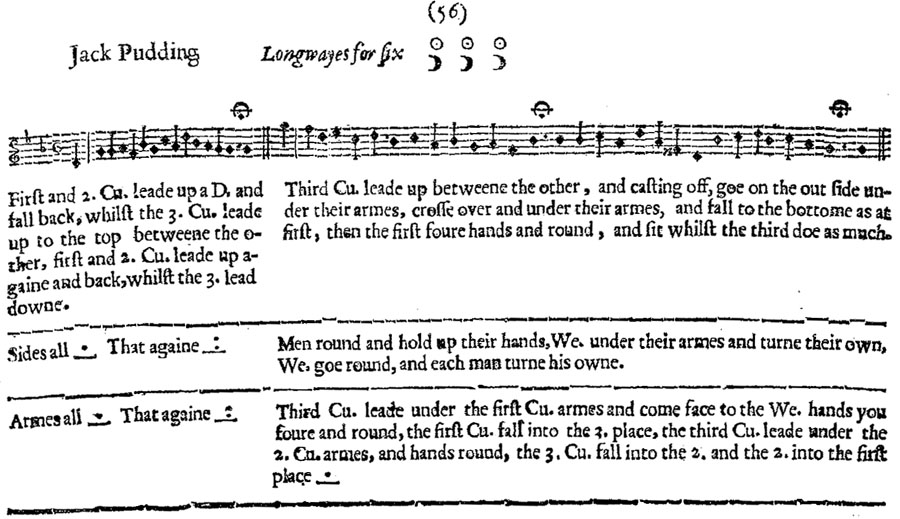Original page from English Dance & Song, April May 1953

Back to Dance Index

| A1 |
#1s & #2s: Up a Double & Back x2 - Wheel Around to face the other couple as you fall back the second time and make Arches
WHILE #3s Lead Up, Turn Alone (8), Lead Down, Turn Alone (8) |
| B1 |
#3s Lead Up, Lady Crossing in Front of the Man, Separate, Cast Down one place
Dance straight across through two Arches; Cast Down to the Bottom |
| B2 | #1s & #2s Circle Left; Circle Right - Fall Back at the end so that all three couples are in a wide Circle facing the Middle |
| A1 | Partner Into Line Siding: Right Shoulder; Left Shoulder |
| B1 |
Men Fall Back (4), Come Forward and make a Circle of Arches (fingertips) (4)
Ladies dance AC around your Partner - Men Fall Back to Place (8) |
| B2 |
Ladies Fall Back (4), Come Forward and make a Circle of Arches (fingertips) (4)
Men dance CW around your Partner - All Fall Back into Place (8) |
| A1 | Partner Arm Right; Arm Left - finish in the same circle |
| B1, B2, B3 |
The Men lead all the moves: #3s dance AC around #1 Man (Lady following the Man, without holding hands) - finish facing #1s
#1s & #3s Circle Left Flow out of the Circle: #1s lead to #3s Place; #3s flow into #1s Place and keep moving to: #3s Repeat the move with #2s |
| B4, B5, B6 | The same with #1s Leading |
| B7, B8, B9 | The same with #2s Leading |

I'd love to hear from you if you know anything more about this dance, its composer, its style, or its history.
Feedback is very welcome on any aspect of these dances or Web pages.
Please contact John Sweeney with your comments.
